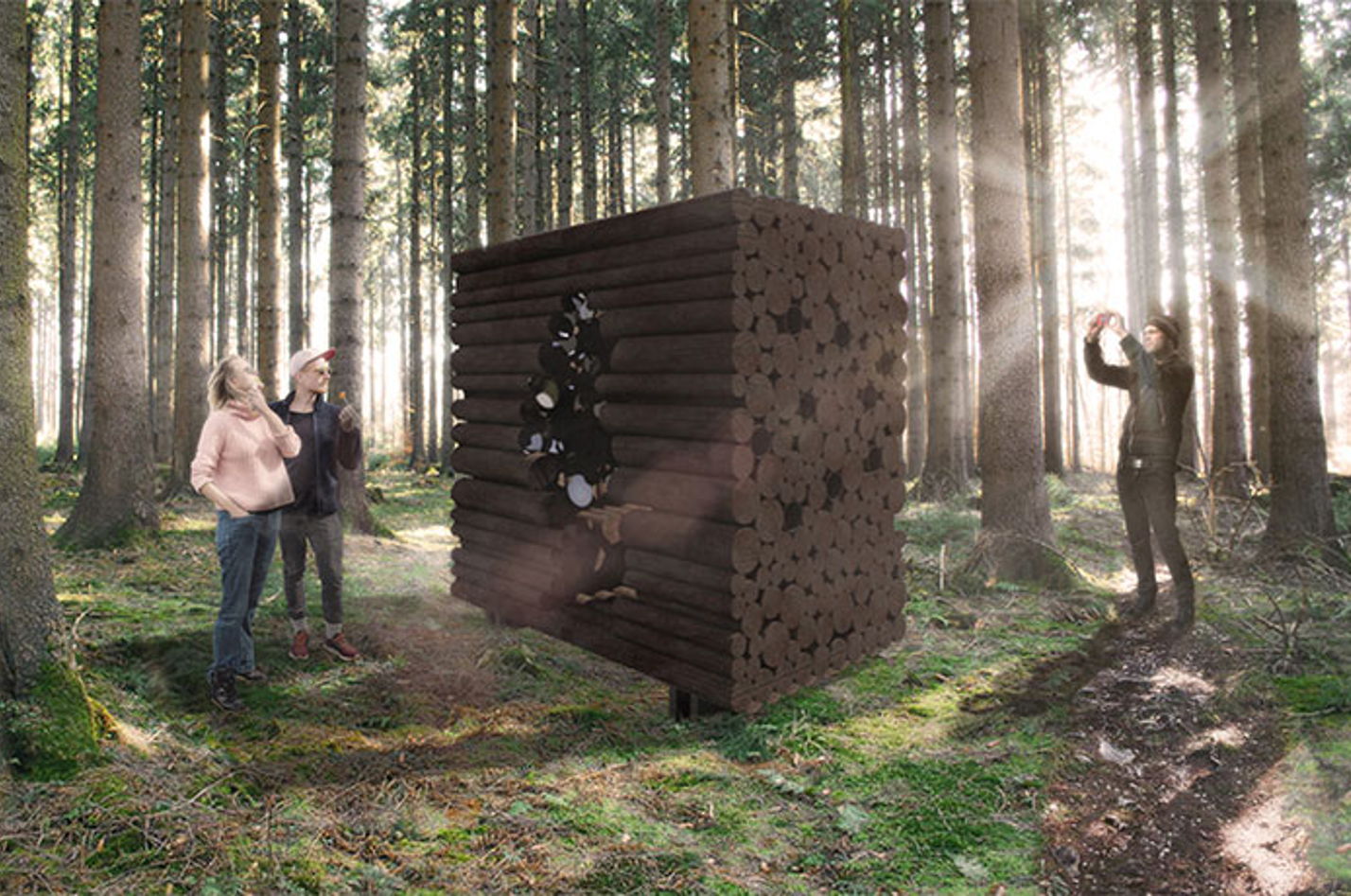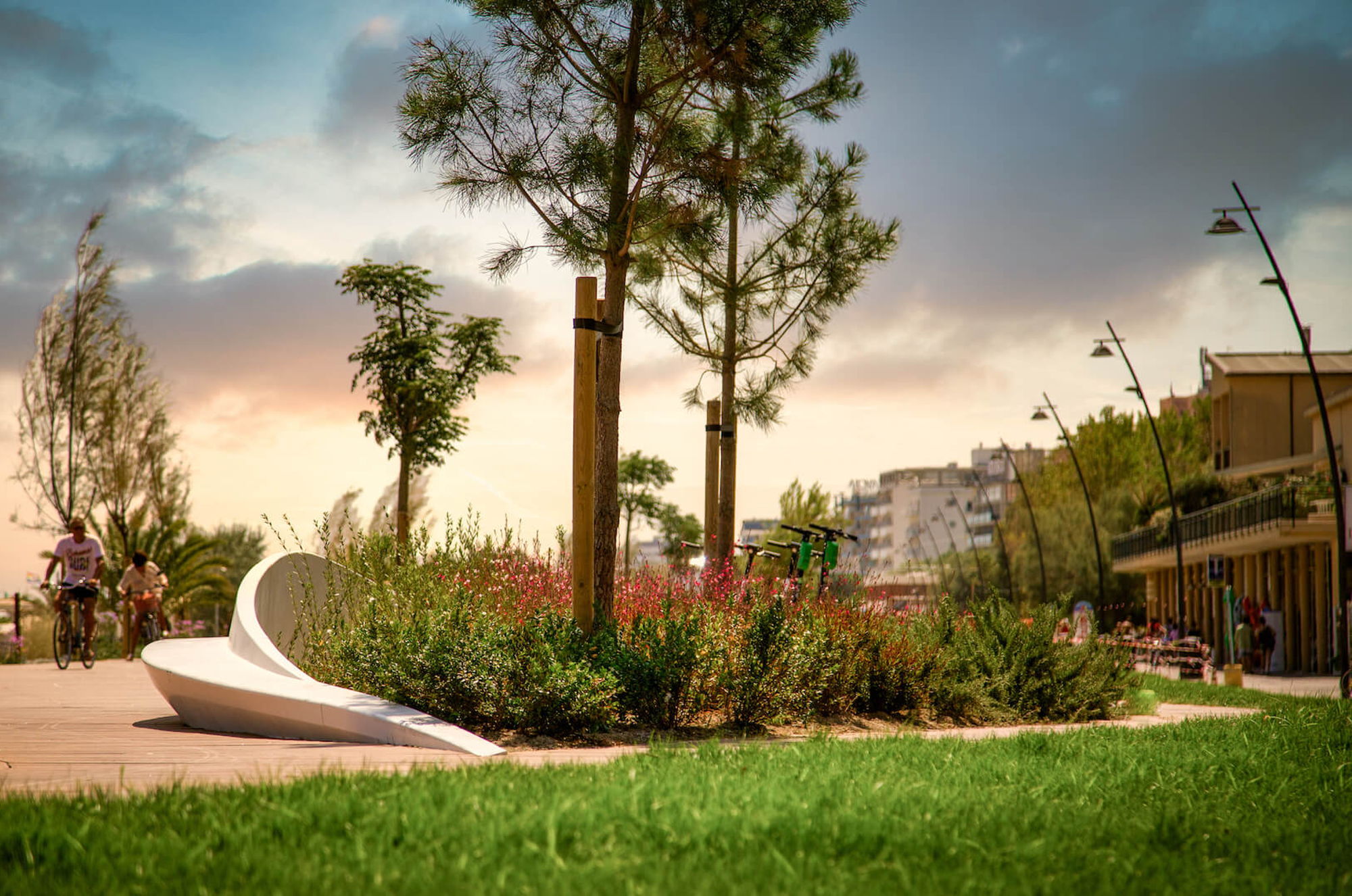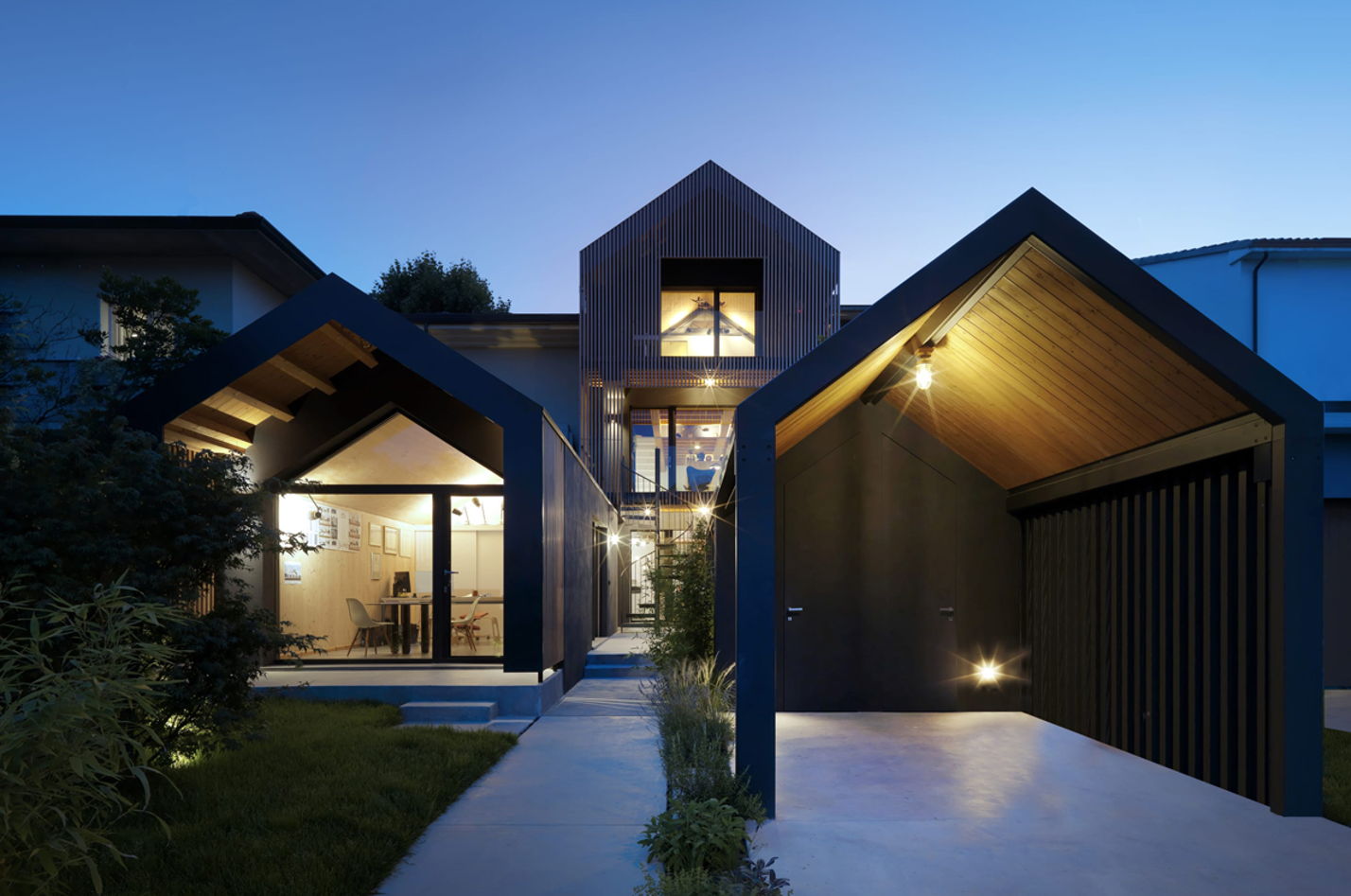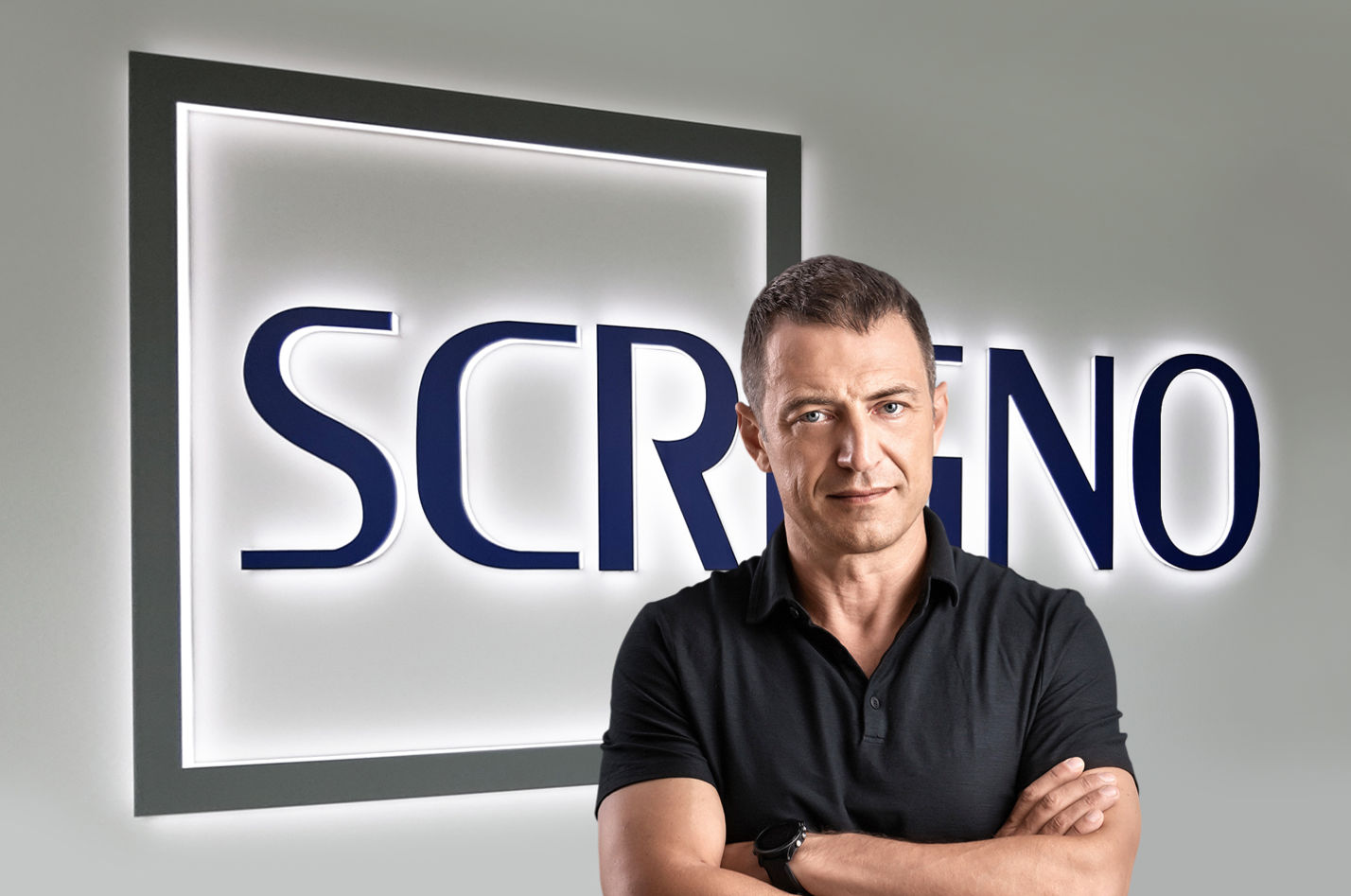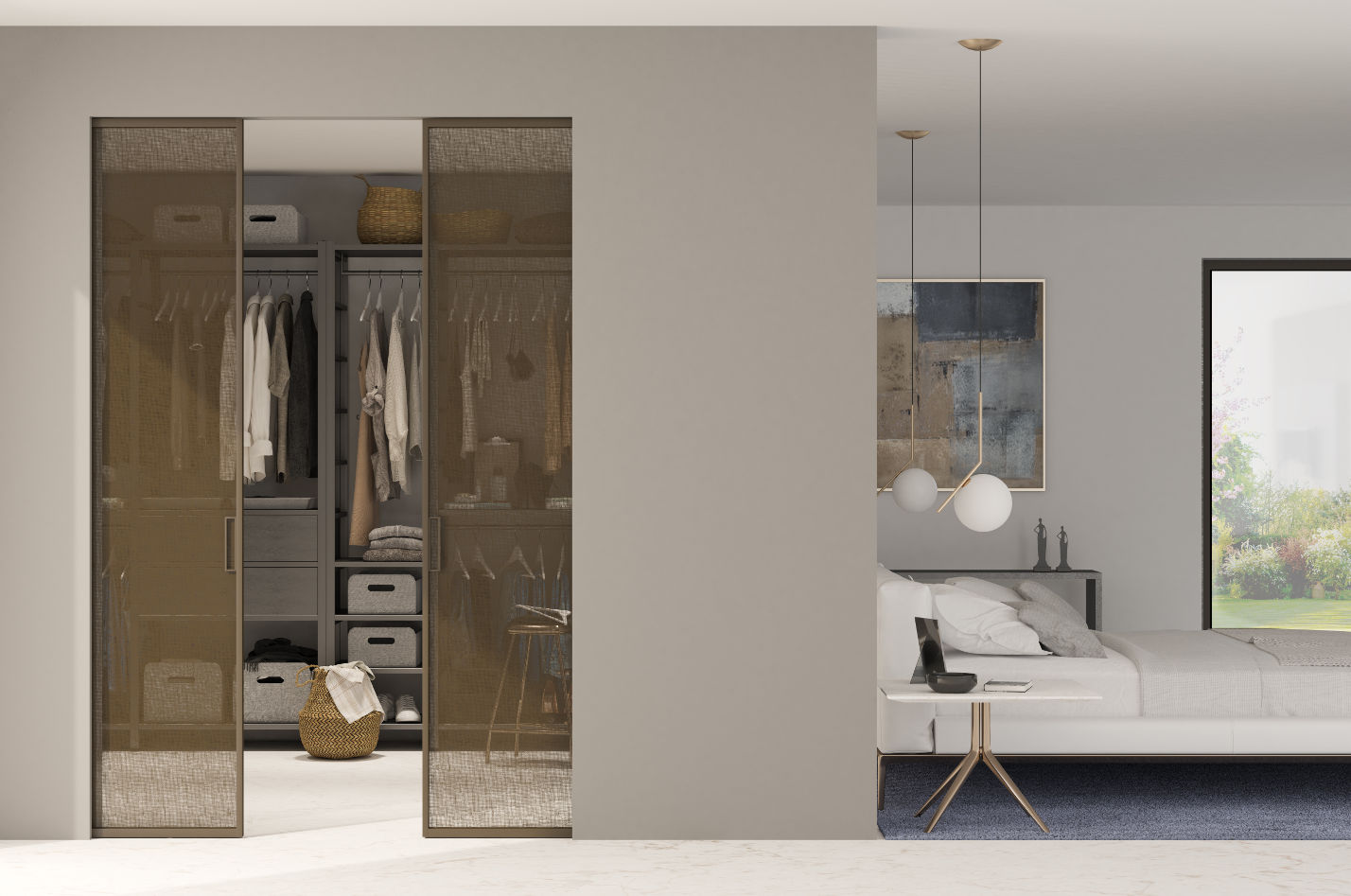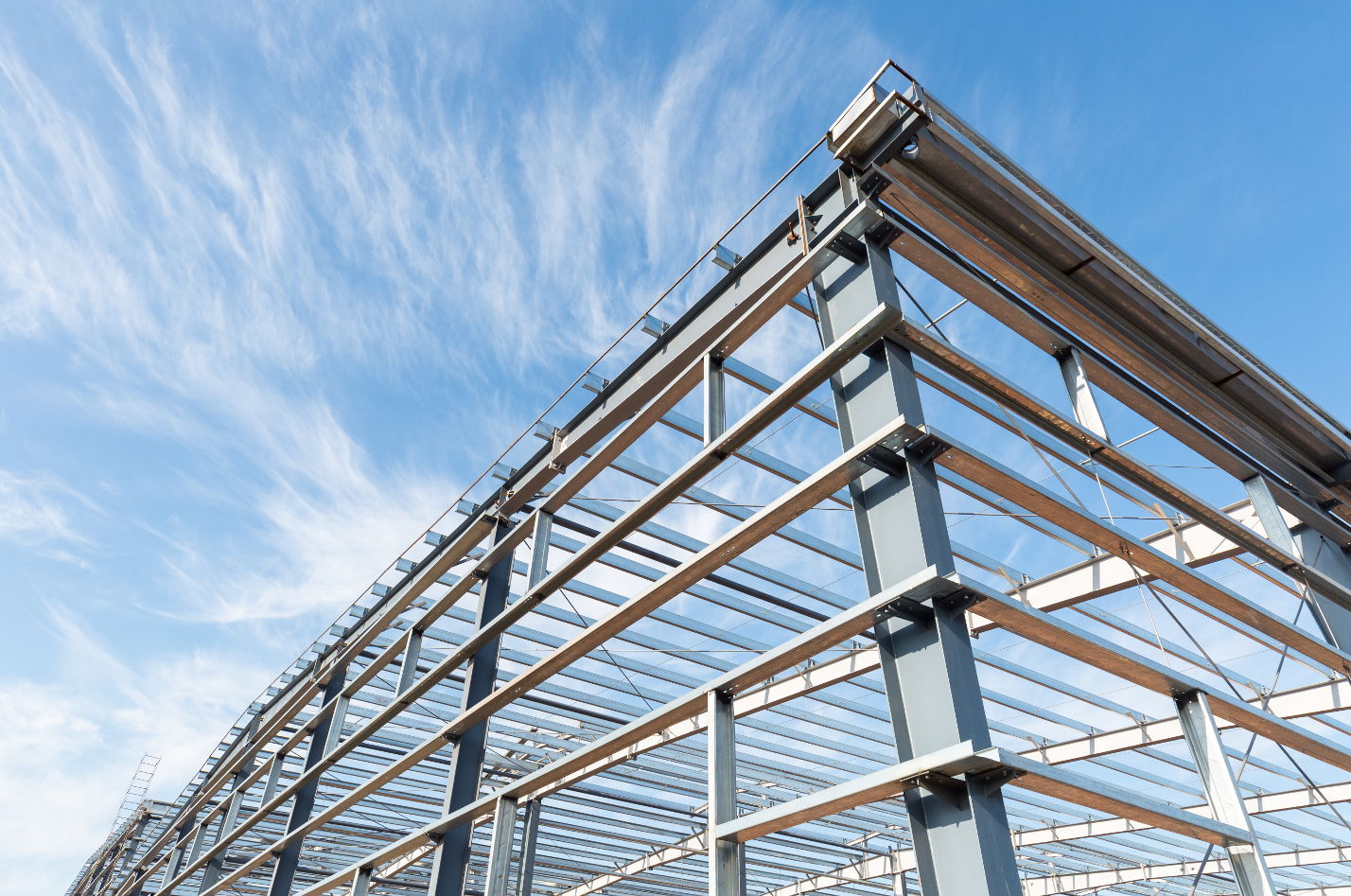A Door on a Better World
The initiative is promoted by the company Scrigno, with the contribution of MC A Mario Cucinella Architects
A new installation will soon come to life in the woods of Valsugana, in the suggestive contemporary mountain, a symbol of the symbiosis of mankind, nature and works inspired by human creativity. It will be by the young and talented designers of YACademy, under the supervision of the firm MC A Mario Cucinella Architects.
An architecture of the soul, whose language evokes precise symbols in the mind, stirring emotions and sensations which reinforce the special relationship that enables humans to forge an intimate connection with nature. This is one of the distinctive characteristics of the new installation that will soon be added to Arte Sella, the contemporary art mountain nestled in the woods of Valsugana (TN), home to works of art that stir a unique dialogue between human creativity and the natural world. A suggestive location, enriched by the contribution of acclaimed artists and architects the likes of Eduardo Souto de Moura, Kengo Kuma, Michelangelo Pistoletto and Edoardo Tresoldi, to name but a few.
A new installation will be added this autumn, created thanks to an initiative promoted by the company Scrigno Spa, in partnership with YACademy, international academy of architecture based in Bologna, and MC A Mario Cucinella Architects. The workshop, under the supervision of the firm MC A, with the cooperation of its Research and Development R&D department and involving some students from the YACademy courses in Architecture for Humanity and Architecture for Exhibition concluded at the end of May (2020 edition). The workshop gave rise to three "nomadic architecture" proposals, one of which (selection is currently under way) will be built inside the Arte Sella mountain on occasion of the planting of a thousand trees, as a symbolic gesture of compensation for the damage inflicted upon the mountain by Vaia storm which struck the Triveneto area in 2018.
The installation as a symbolic portal towards change
"A door on a better world" is the topic of focus for three groups of designers under the tutorship of Martina Ruini, an architect from the firm MC A, directly reviewed by Mario Cucinella.
We asked the young designers to develop a reflection on the implications which architecture has on the environment, in an installation that symbolises a renewed architectural approach towards the environment and natural topics, positioned somewhere that symbolises the relationship between humans and nature, namely the Arte Sella mountain
Martina Ruini explains. Therefore, an installation in harmony with a decisively suggestive setting, sensitive to the topic of sustainability, also capable of stimulating reflections on climate change, especially after Vaia storm.
The installations also serve the purpose of driving a symbolic message, eternal in a certain sense, in which it possible to recognise oneself, even in the future. This is why particular attention was paid to the language of the architecture, from which a message for society should emerge. Lastly, there is the challenge of creating an architecture with a nomadic character, so as to relate to the change which is unfortunately also affecting these places. All the projects were highly appreciated by Scrigno, Mario Cucinella and Arte Sella; now we must choose one of them and feasibility will play a decisive role in the final decision.
Martina Ruini concludes.
The three entries
THE JOURNEY
by Afreen Ali, Anna Collatuzzo, Arezoo Mohepour, Juan Salamanca Balen, Paula Strieder
A sanctuary for reflection and which inspires travel, as an inner pathway. In short, this is the key concept of the project "The Journey". The micro-architecture consists of simple metal profiles and a metal sheet base, ballasted also using local stones. The internal and external border of the "volume" is formed by reused elastic ropes. The coloured ropes allude to a interpenetration of two different volumes, grafted onto a base with a different shape (the external one is square and the inner one is circular).
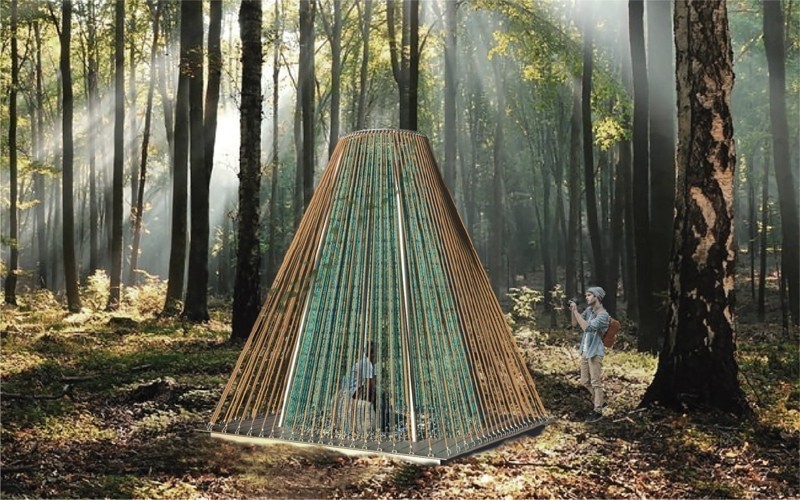
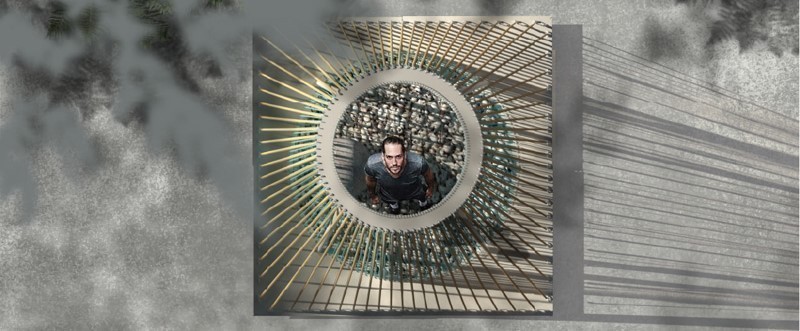
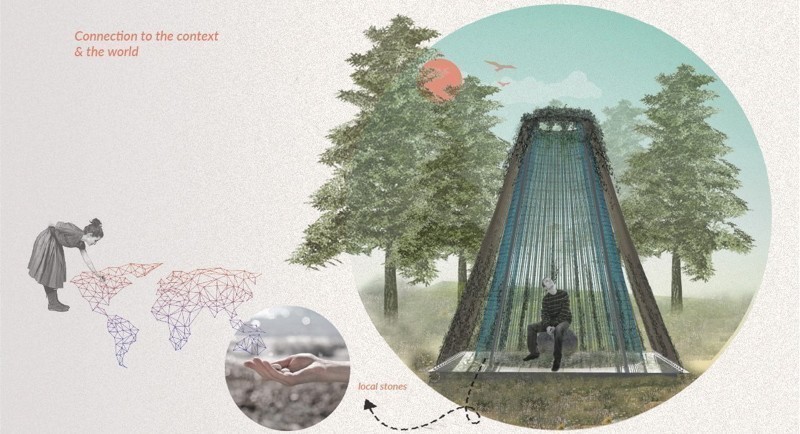
Before arriving at the core, there is a sort of ring route and the journey begins. The inside is a «ort of observation point towards the sky; therefore the installation symbolises the rekindled relationship between primary elements, namely the sky and the earth the visitor comes into contact with the moment they arrive at the centre of the installation. The simplicity of this relationship between elements also represents a return to origins», Martina Ruini explains once more. The architect adds:«the young designers wanted to develop a reflection on the precarious nature of human permanence in the life of our planet, and on the changes we are involved in, which are much more important and powerful than us". Over time, nature will take over the structure, colonising it. Thus the installation will blend into the surrounding vegetation.
ESHO FUNI
by Nicoletta Centioni, Marta Daturi, Francesca Maestri, Diego Vazquez
As human beings, we are inseparable from nature and our environment reflects our inner selves: this is the inspiring principle of the project. Ruini explains:«By referring to the Buddhist principle, the designers explicitly return the relationship between humans and nature to centre stage». The structural similarities between the human body and trees (the vertebral column is comparable to the trunk, branches are the arms, sap is the blood, etc.) become a source of inspiration. In particular, the designers focus on the blood-sap analogy as in trees, the latter conveys nourishment to branches and leaves, all the way to the human heart.
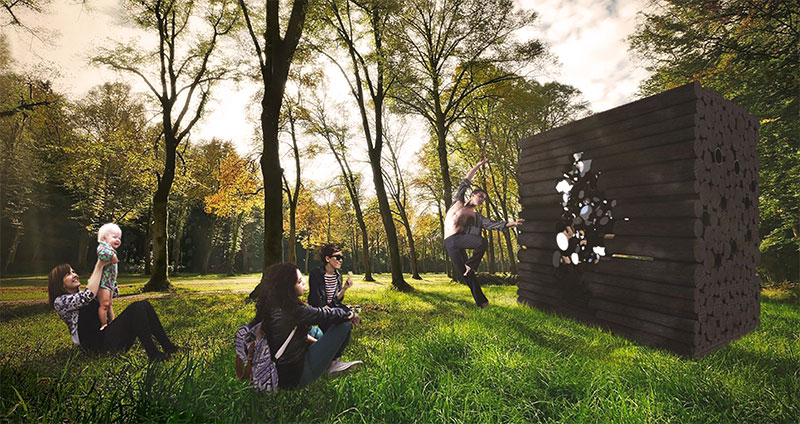
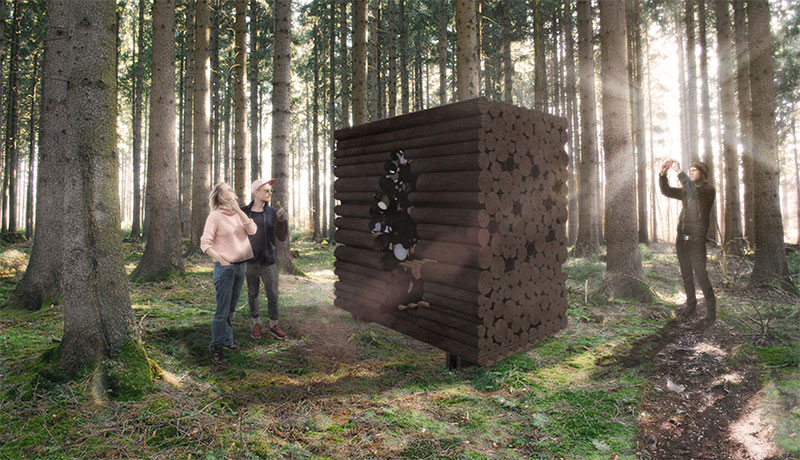

Entering the heart of a trunk is the action that brings to life a symbolic space for meditation on the Buddhist principle. The installation mainly consists of wooden trunks which make room for a cavity in which a seat is placed. «The visitor is invited not only to reflect, but to interact with the natural element, which is also a work of art"», the architect from the firm MC A. explains once more. The internal space contains a series of mirrors set in some of the trunks. Different inclinations result in a variety of reflections of surrounding nature and the user.
SOUND
by Viviana Cerlino, Elena Giaccone, Tatiana Nebiolo
Here the inspiring principle stems from the physics of reverberation: it can be said that each sound impulse interacts with its surroundings and so the permanence of a sound in an environment depends on the capacity of bodies to reflect or absorb sound waves.
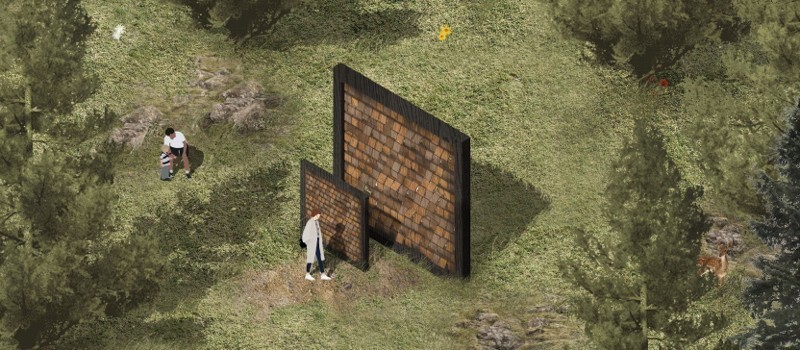
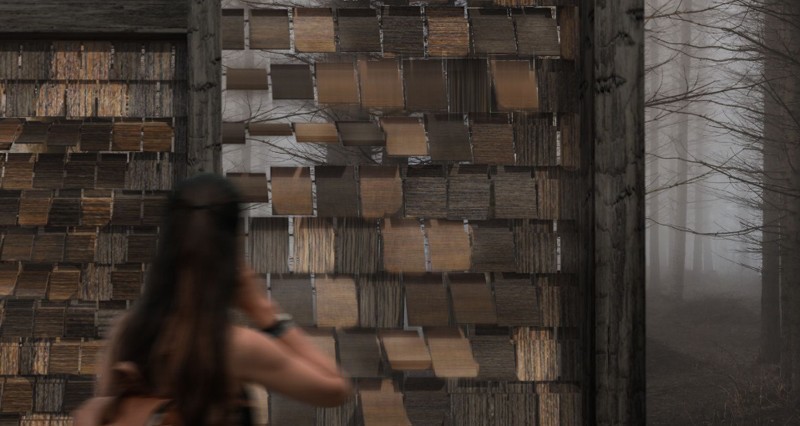
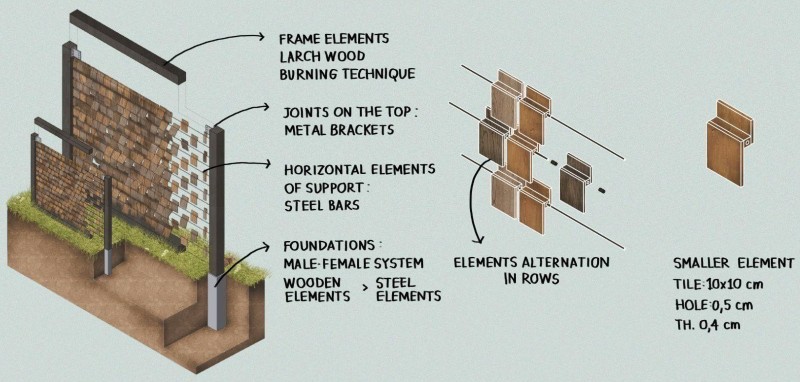
Each passage is recorded and persists in the environment; mankind, as a minuscule fragment, participates in this perpetual concert. "Stop and listen to this incredible sound you are participating in" is the implicit invitation of this project proposal for a portal conceived as a musical instrument in the wood, inspired by the verses of Fernando Pessoa:
«If I listen, I hear your steps.
Existing as I exist»
Martin Ruini also highlights how «he most interesting aspect of this project is that the installation does not create a space.». The visitor can interact with it by activating the pieces it is made of. A playful element, consisting of portals holding together wooden blocks arranged in parallel lines, all free to move and rotate around the steel strings supporting it.
The wind is the driving force and the installation itself is the musical instrument. Blocks made from different wood varieties will have different densities and specific weights, so they will emit different sounds. Wood is perishable and will return to the earth over time. The designers themselves have launched the idea of building it in forests at risk throughout the world, as a symbol for raising awareness on the issue of forest ecosystem preservation.
Source: Professione Architetto

